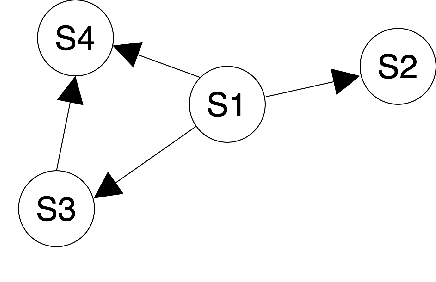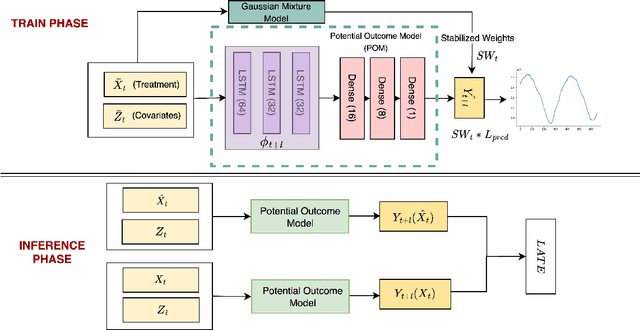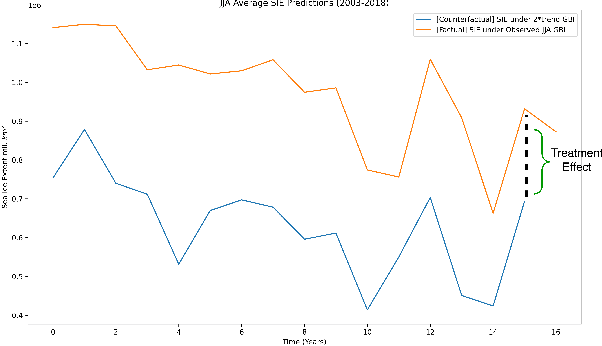Omar Faruque
gWaveNet: Classification of Gravity Waves from Noisy Satellite Data using Custom Kernel Integrated Deep Learning Method
Aug 26, 2024Abstract:Atmospheric gravity waves occur in the Earths atmosphere caused by an interplay between gravity and buoyancy forces. These waves have profound impacts on various aspects of the atmosphere, including the patterns of precipitation, cloud formation, ozone distribution, aerosols, and pollutant dispersion. Therefore, understanding gravity waves is essential to comprehend and monitor changes in a wide range of atmospheric behaviors. Limited studies have been conducted to identify gravity waves from satellite data using machine learning techniques. Particularly, without applying noise removal techniques, it remains an underexplored area of research. This study presents a novel kernel design aimed at identifying gravity waves within satellite images. The proposed kernel is seamlessly integrated into a deep convolutional neural network, denoted as gWaveNet. Our proposed model exhibits impressive proficiency in detecting images containing gravity waves from noisy satellite data without any feature engineering. The empirical results show our model outperforms related approaches by achieving over 98% training accuracy and over 94% test accuracy which is known to be the best result for gravity waves detection up to the time of this work. We open sourced our code at https://rb.gy/qn68ku.
Estimating Direct and Indirect Causal Effects of Spatiotemporal Interventions in Presence of Spatial Interference
May 13, 2024Abstract:Spatial interference (SI) occurs when the treatment at one location affects the outcomes at other locations. Accounting for spatial interference in spatiotemporal settings poses further challenges as interference violates the stable unit treatment value assumption, making it infeasible for standard causal inference methods to quantify the effects of time-varying treatment at spatially varying outcomes. In this paper, we first formalize the concept of spatial interference in case of time-varying treatment assignments by extending the potential outcome framework under the assumption of no unmeasured confounding. We then propose our deep learning based potential outcome model for spatiotemporal causal inference. We utilize latent factor modeling to reduce the bias due to time-varying confounding while leveraging the power of U-Net architecture to capture global and local spatial interference in data over time. Our causal estimators are an extension of average treatment effect (ATE) for estimating direct (DATE) and indirect effects (IATE) of spatial interference on treated and untreated data. Being the first of its kind deep learning based spatiotemporal causal inference technique, our approach shows advantages over several baseline methods based on the experiment results on two synthetic datasets, with and without spatial interference. Our results on real-world climate dataset also align with domain knowledge, further demonstrating the effectiveness of our proposed method.
Causality for Earth Science -- A Review on Time-series and Spatiotemporal Causality Methods
Apr 03, 2024Abstract:This survey paper covers the breadth and depth of time-series and spatiotemporal causality methods, and their applications in Earth Science. More specifically, the paper presents an overview of causal discovery and causal inference, explains the underlying causal assumptions, and enlists evaluation techniques and key terminologies of the domain area. The paper elicits the various state-of-the-art methods introduced for time-series and spatiotemporal causal analysis along with their strengths and limitations. The paper further describes the existing applications of several methods for answering specific Earth Science questions such as extreme weather events, sea level rise, teleconnections etc. This survey paper can serve as a primer for Data Science researchers interested in data-driven causal study as we share a list of resources, such as Earth Science datasets (synthetic, simulated and observational data) and open source tools for causal analysis. It will equally benefit the Earth Science community interested in taking an AI-driven approach to study the causality of different dynamic and thermodynamic processes as we present the open challenges and opportunities in performing causality-based Earth Science study.
TS-CausalNN: Learning Temporal Causal Relations from Non-linear Non-stationary Time Series Data
Apr 01, 2024Abstract:The growing availability and importance of time series data across various domains, including environmental science, epidemiology, and economics, has led to an increasing need for time-series causal discovery methods that can identify the intricate relationships in the non-stationary, non-linear, and often noisy real world data. However, the majority of current time series causal discovery methods assume stationarity and linear relations in data, making them infeasible for the task. Further, the recent deep learning-based methods rely on the traditional causal structure learning approaches making them computationally expensive. In this paper, we propose a Time-Series Causal Neural Network (TS-CausalNN) - a deep learning technique to discover contemporaneous and lagged causal relations simultaneously. Our proposed architecture comprises (i) convolutional blocks comprising parallel custom causal layers, (ii) acyclicity constraint, and (iii) optimization techniques using the augmented Lagrangian approach. In addition to the simple parallel design, an advantage of the proposed model is that it naturally handles the non-stationarity and non-linearity of the data. Through experiments on multiple synthetic and real world datasets, we demonstrate the empirical proficiency of our proposed approach as compared to several state-of-the-art methods. The inferred graphs for the real world dataset are in good agreement with the domain understanding.
Deep Spatiotemporal Clustering: A Temporal Clustering Approach for Multi-dimensional Climate Data
Apr 27, 2023Abstract:Clustering high-dimensional spatiotemporal data using an unsupervised approach is a challenging problem for many data-driven applications. Existing state-of-the-art methods for unsupervised clustering use different similarity and distance functions but focus on either spatial or temporal features of the data. Concentrating on joint deep representation learning of spatial and temporal features, we propose Deep Spatiotemporal Clustering (DSC), a novel algorithm for the temporal clustering of high-dimensional spatiotemporal data using an unsupervised deep learning method. Inspired by the U-net architecture, DSC utilizes an autoencoder integrating CNN-RNN layers to learn latent representations of the spatiotemporal data. DSC also includes a unique layer for cluster assignment on latent representations that uses the Student's t-distribution. By optimizing the clustering loss and data reconstruction loss simultaneously, the algorithm gradually improves clustering assignments and the nonlinear mapping between low-dimensional latent feature space and high-dimensional original data space. A multivariate spatiotemporal climate dataset is used to evaluate the efficacy of the proposed method. Our extensive experiments show our approach outperforms both conventional and deep learning-based unsupervised clustering algorithms. Additionally, we compared the proposed model with its various variants (CNN encoder, CNN autoencoder, CNN-RNN encoder, CNN-RNN autoencoder, etc.) to get insight into using both the CNN and RNN layers in the autoencoder, and our proposed technique outperforms these variants in terms of clustering results.
Quantifying Causes of Arctic Amplification via Deep Learning based Time-series Causal Inference
Mar 14, 2023



Abstract:The warming of the Arctic, also known as Arctic amplification, is led by several atmospheric and oceanic drivers, however, the details of its underlying thermodynamic causes are still unknown. Inferring the causal effects of atmospheric processes on sea ice melt using fixed treatment effect strategies leads to unrealistic counterfactual estimations. Such models are also prone to bias due to time-varying confoundedness. In order to tackle these challenges, we propose TCINet - time-series causal inference model to infer causation under continuous treatment using recurrent neural networks. Through experiments on synthetic and observational data, we show how our research can substantially improve the ability to quantify the leading causes of Arctic sea ice melt.
 Add to Chrome
Add to Chrome Add to Firefox
Add to Firefox Add to Edge
Add to Edge